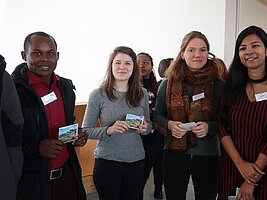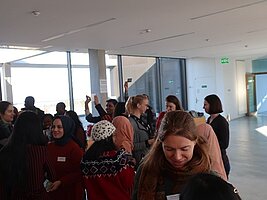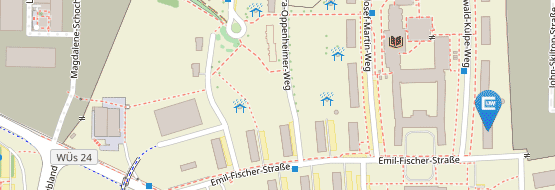I am


Aim of the method/strategy
- Participants are able to understand the complexity and the variety of identity.
- Participants are able to describe how and why culture, religion and identity play a role in learning settings.
Setting
- The setting is a classroom with moveable chairs and tables
Type and name of the course, curriculum, number of students involved in the teaching practice:
The method originates from the teaching and learning materials of the “Curriculum interculurALE” project. Curriculum interculturALE is a tailor-made intercultural training course for instructors and volunteer learning guides who work with refugees in adult education, e.g. in low-threshold language courses or orientation / integration courses. It was developed by DVV International, the International Institute of the German Adult Education Association, in cooperation with an international team of experts from Jordan, Palestine, Iraq and Germany. The training opens up a space where adult educators can reflect on and learn how to tackle challenges like the increasing diversity in the classroom, distress and trauma, language barriers and differences in learners’ educational backgrounds.
We applied this method with a group of about 12–15 people.
Description of method/strategy
The trainer distributes eight moderation cards to each participant. On these, they are asked to write down eight identities and/or roles to answer to the question “Who are you?”. The question “Who are you?” can be applied to various contexts, private or work-related. For example, when working with adult educators, different roles might include “counselor”, “guide”, “mediator”, “friend”, and so on. After everyone has finished, the participants are asked to hold the cards face-down, to turn to their left and let their neighbour take two cards at random, then turn to the right and let their other neighbour randomly take two more cards. (Information for the trainer: Randomly taking away two cards is meant to be a metaphorical act which could be compared to the refugees’ experience of having lost some aspects of their identities, some roles because of their escape). The cards that have been taken should be hidden/face-down by the neighbours for privacy reasons (or placed face-down under the owner’s chair). There are four cards per person left, and these are collected and separated by the trainer, in order to avoid similar/same words. The trainer then gives the participants another instruction. Everyone is asked to sit on a chair. The trainer starts to read the words out loud that are written on the collected cards. If the participants identify themselves with the content of a card, they are asked to stand up (no matter whether they wrote it down themselves). If they don’t identify with it, they remain seated. The activity is finished as soon as the trainer has read out all the moderation cards.
Afterwards there is a discussion led by the trainer with the following questions:
- How was it for you to choose only eight words to say who you are?
- How did you feel after the first round in the exchange with your neighbours?
- Would you have taken away the same cards as your neighbour?
- What was it like to be reduced from eight to four roles or aspects of your identity?
- What does it remind you of when thinking about your work with refugees?
- What did you notice? Was there something you hadn’t expected?
- Did you feel any social pressure?
- Did you miss something that you wrote down that was removed by one of your neighbours?
Materials required
- moderation cards (eight cards per participant)
- pencils
- pin board
- pins
Origin and theoretical framework
The method refers to ‘multicollectivity’ as an intercultural approach (Stephanie Rathje 2014, stefanie-rathje.de/stefanie-rathje-publications/).
Possible variations
- Variation: Divide the participants into groups of three or four. Tell the newly-formed groups that their assignment is to find ten things that they have in common with every other person in the group. Tell the participants that one person must take notes and be ready to read their list to the whole group upon completing the assignment. Then, each group shares their whole list in the plenary.
- Context: We used this method in intercultural training-of-trainers and in courses for refugees.
Other examples where you think it could be used
- The method can be used in every context where you have a new learning group in a multicultural, diverse setting.
Recommendations
- This method can be used as an introduction to the topic of diversity and multicollectivity in intercultural trainings or can be used as a method for getting to know each other in workshops with diverse learners.
References
DVV International (2018). Curriculum interculturALE: Interkulturell didaktische Lehr- und Lernmaterialien, Bonn, available at:
https://www.dvv-international.de/en/materials/teaching-and-learning-materials/curriculum-interculturale/
Contact Persons
Thomas Lichtenberg (Lichtenberg@dvv-international.de)
Johann Heilmann (Heilmann@dvv-international.de)


